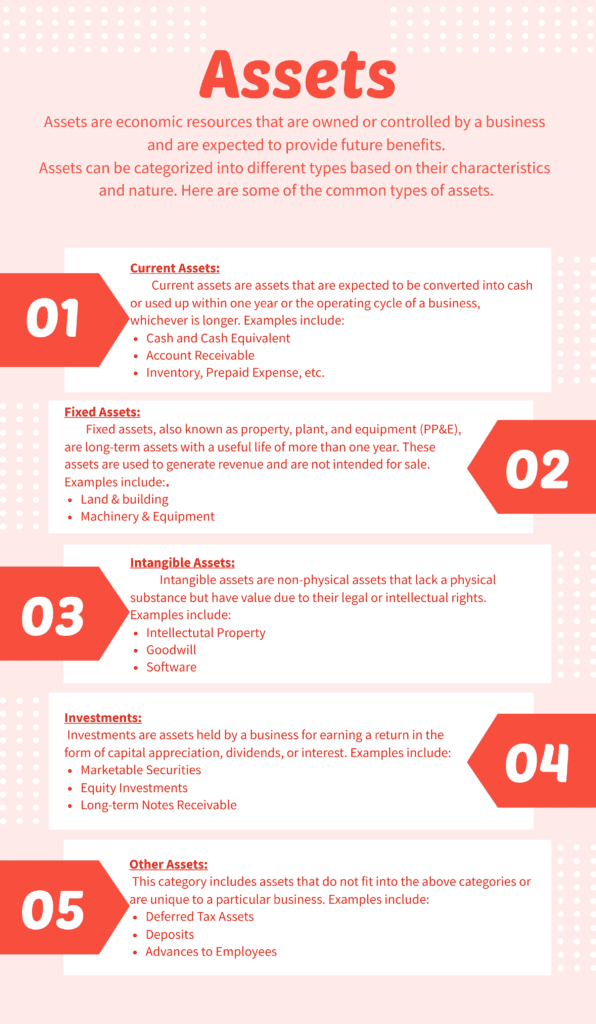In accounting, assets are economic resources that are owned or controlled by a business and are expected to provide future benefits.
Assets can be categorized into different types based on their characteristics and nature. Here are some of the common types of assets:

• Current Assets: Current assets are assets that are expected to be converted into cash or used up within one year or the operating cycle of a business, whichever is longer. Examples include:
- o Cash and Cash Equivalents: Physical currency, bank deposits, and short-term investments.
- o Accounts Receivable: Amounts owed to the business by customers for goods or services provided on credit.
- o Inventory: Goods held for sale or raw materials used in the production process.
- o Prepaid Expenses: Expenses paid in advance, such as prepaid insurance or prepaid rent.
• Fixed Assets: Fixed assets, also known as property, plant, and equipment (PP&E), are long-term assets with a useful life of more than one year. These assets are used to generate revenue and are not intended for sale. Examples include:
- o Land and Buildings: Real estate owned by the business for its operations.
- o Machinery and Equipment: Tools, machinery, and equipment used in the production or service delivery process.
- o Vehicles: Cars, trucks, or other vehicles used for business purposes.
- o Furniture and Fixtures: Office furniture, fixtures, and fittings.
• Intangible Assets: Intangible assets are non-physical assets that lack a physical substance but have value due to their legal or intellectual rights. Examples include:
- o Intellectual Property: Patents, copyrights, trademarks, and trade secrets.
- o Goodwill: The value of a business’s reputation, customer base, and brand recognition.
- o Software: Computer software developed or purchased for business use.
- o Licenses and Permits: Rights granted by authorities to conduct specific activities.
• Investments: Investments are assets held by a business for earning a return in the form of capital appreciation, dividends, or interest. Examples include:
- o Marketable Securities: Stocks, bonds, and other securities that can be easily bought or sold in the market.
- o Equity Investments: Ownership interests in other companies.
- o Long-term Notes Receivable: Loans made to other entities with repayment terms extending beyond one year.
• Other Assets: This category includes assets that do not fit into the above categories or are unique to a particular business. Examples include:
- o Deferred Tax Assets: Tax benefits or credits that will be realized in future periods.
- o Deposits: Amounts paid to secure services or contracts.
- o Advances to Employees: Funds given to employees for business expenses.
It’s important to note that the classification of assets may vary based on accounting standards and the specific needs of an organization. However, these categories provide a general overview of the types of assets commonly found in financial reporting.
